This is a narrow passage in Marylebone that once led to horse stables for the rich folk who lived here and is now more of a back access for a replacement mansion block
The mews first shows up as a plan only in a map from 1799 as the area was being developed by the Portman Estate from fields into housing.
Just a few years later, the whole area was developed, and Spring Mews was now providing access to the backs of grand houses facing outwards onto the roads.
The road to the eastern side of the block of houses was originally called Upper Spring Street, but later renamed Montagu Mansions when the smaller houses were replaced in around 1896 with the large mansion block, also called Montagu Mansions that fills that side of the site.
Some rooms in Montagu Mansions were used by the Special Operations Executive during WWII, and although bombing in WWII wasn’t accurate enough for the building to have been deliberately targeted, the northern corner where the SOE was based was indeed hit by a bomb and badly damaged the whole area.
As an aside, in 1961, the local council wanted to rename the road to Bournbridge Street, but the residents kicked up a huge fuss, complaining that they would seek compensation for the cost of replacing their headed notepaper and business cards. The name didn’t change.
During WWII, there was also damage to the southern end of the mews. That is why when you look at the mews entrance from the south, you’ve got a modern brick building on the corner whereas around the side where there wasn’t any bomb damage, they still have the original Georgian houses.
As you walk down, literally, into the mews alley, you can see the two very different characters of the area — with the back of the mansions on your right, and the lingering remnants of the old horse stables on the left. As with all mews, the rise of the motorcar saw the stables turned into garages and in 1990, they were converted into expensive flats.
A nice quirk down here is a small blue shed stuck in a corner of what looks to be a small patch of private courtyard.
Otherwise, it’s a fairly unremarkable alleyway that’s left scarcely a mark in history.

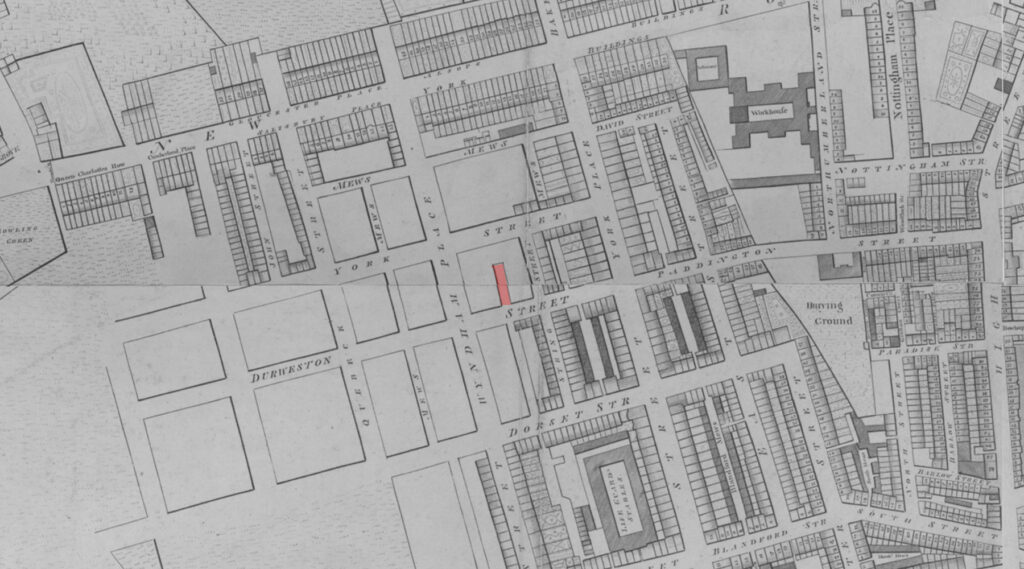
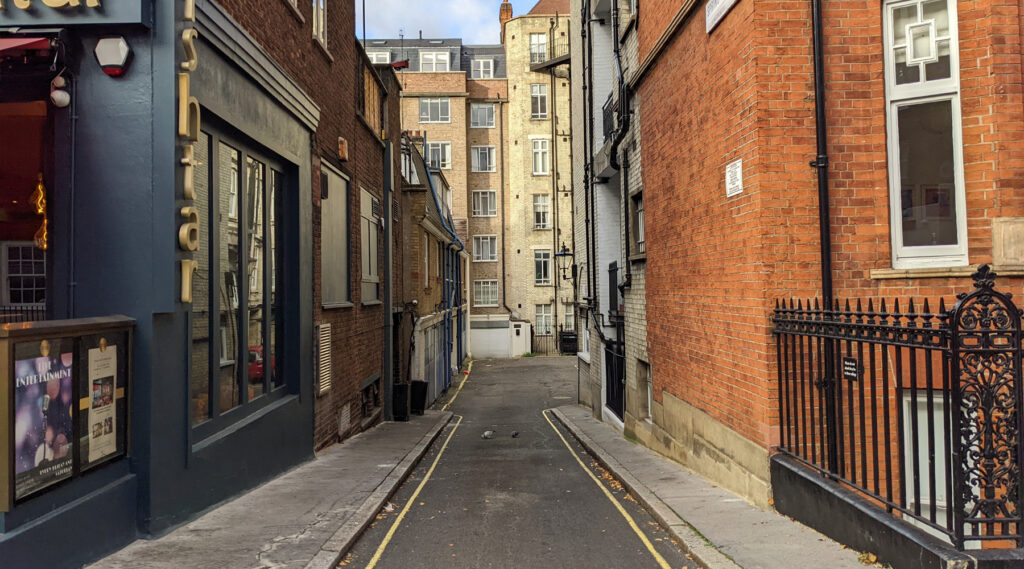
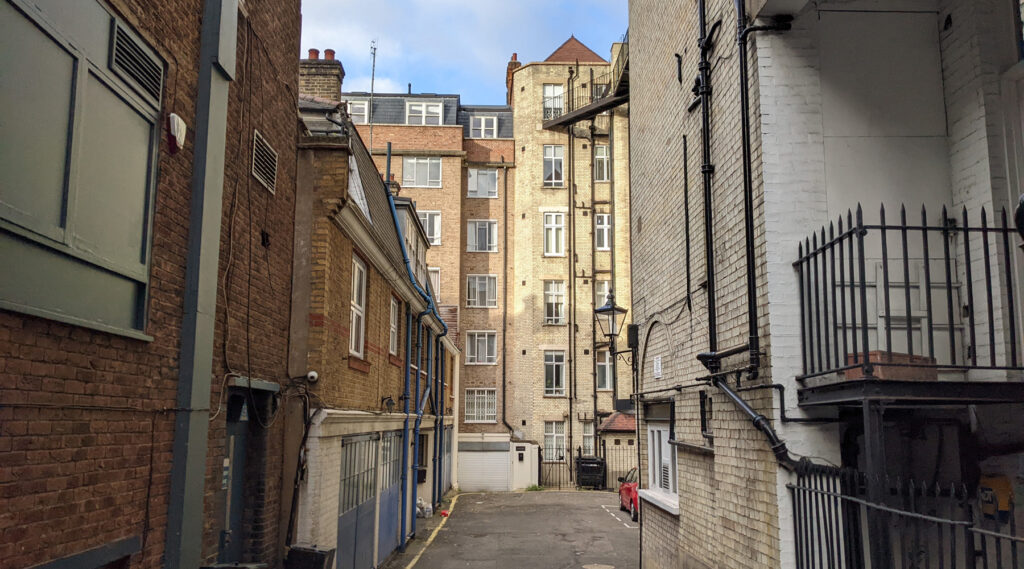
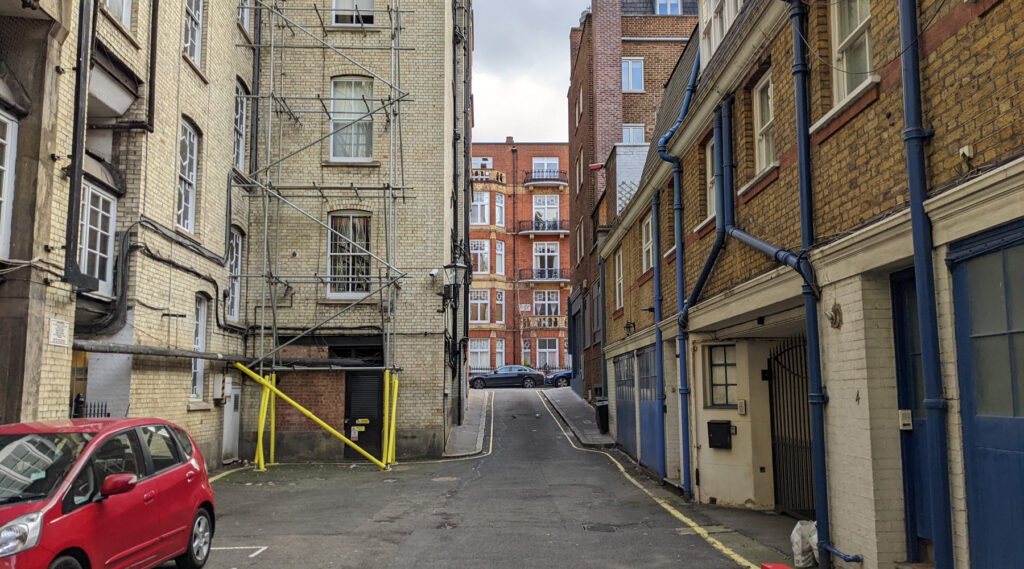
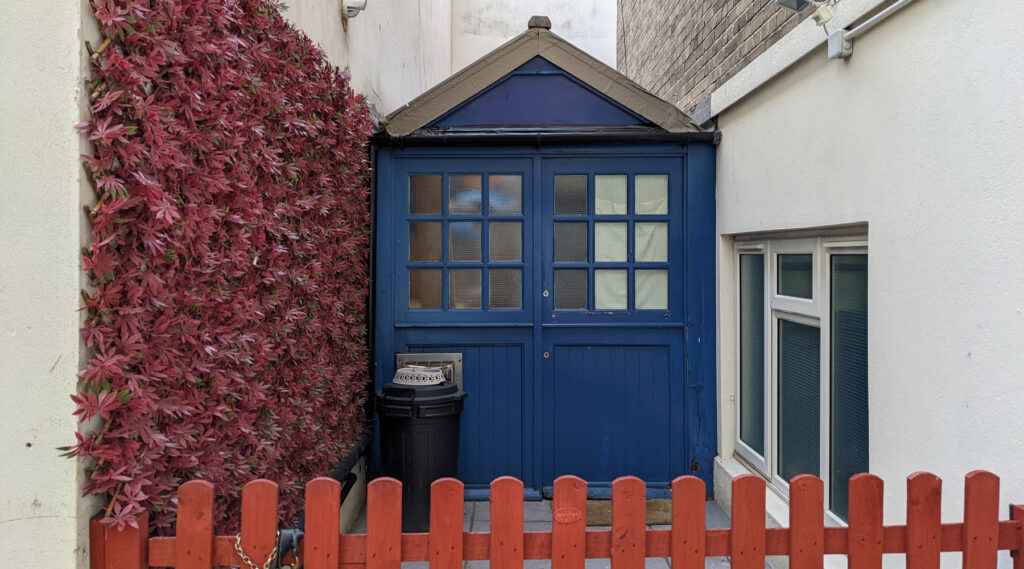






Leave a Reply